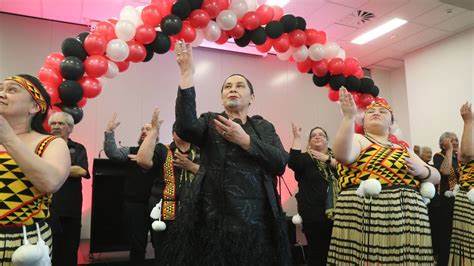
| Variable | Special voting Yes for Cannabis |
| Never married | 0.781 |
| No children | 0.745 |
| Special voting Yes for euthanasia | 0.742 |
| Part-time study | 0.730 |
| Voting Greens 2020 | 0.682 |
| Aged 20-24 | 0.663 |
| Currently unpartnered | 0.637 |
| Aged 25-29 | 0.625 |
| Neither ownership of house nor house in family trust | 0.594 |
| Working in arts or recreation services | 0.581 |
| Working in information media or telecommunications | 0.575 |
| Receiving income from Student Allowance | 0.559 |
| Level 3 certificate | 0.538 |
| Master’s degree | 0.534 |
| Working as a professional | 0.520 |
| Personal income $5,000-$10,000 | 0.511 |
| Working in professional, scientific or technical services | 0.509 |
| Full-time study | 0.487 |
| Honours degree | 0.483 |
| Receiving wage or salary | 0.473 |
| Doctorate | 0.451 |
| Mean personal income | 0.451 |
| Following Judaism | 0.444 |
| Aged 30-34 | 0.439 |
| Bachelor’s degree | 0.439 |
| Unemployed | 0.426 |
| Voting The Opportunities Party 2020 | 0.422 |
| Working in accommodation or food services | 0.399 |
| Voting Maori Party 2020 | 0.391 |
| Enrolled in a Maori electorate | 0.389 |
| Working in financial or insurance services | 0.374 |
| Median personal income | 0.333 |
| Working in administrative or support services | 0.328 |
| Working in public administration or safety | 0.327 |
| Personal income $70,000+ | 0.327 |
| Personal income < $5,000 | 0.293 |
| Maori | 0.271 |
| Voting Vision NZ Party 2020 | 0.256 |
| Following Spiritualism or a New Age religion | 0.247 |
| Receiving income from Sole Parent Support | 0.238 |
| Voting ALCP 2020 | 0.233 |
| Receiving income from Jobseeker Support | 0.225 |
| Following no religion | 0.223 |
| Employed full-time | 0.218 |
| Working as a community or personal services worker | 0.216 |
| Enrolled in a North Island electorate | 0.200 |
| Following a Maori religion | 0.199 |
| Working in education or training | 0.190 |
| Aged 35-39 | 0.184 |
| Enrolled in an urban electorate | 0.159 |
| Following Buddhism | 0.141 |
| Receiving income from Supported Living Payment | 0.120 |
| Following Hinduism | 0.115 |
| Receiving no source of income | 0.103 |
| Working in rental, hiring or real estate services | 0.097 |
| Asian | 0.093 |
| Following Islam | 0.091 |
| Percentage of electorate overseas-born | 0.078 |
| Employed part-time | 0.063 |
| Voting Sustainable NZ 2020 | 0.048 |
| Working as a sales worker | 0.034 |
| Pacific Islander | 0.032 |
| Percentage of females in electorate | 0.029 |
| Working as a clerical or administrative worker | 0.015 |
| Aged 40-44 | -0.017 |
| One child | -0.026 |
| Percentage of males in electorate | -0.029 |
| Six or more children | -0.042 |
| Receiving income from interest, dividends, rent, other investments | -0.054 |
| Working in transport, postal or warehousing | -0.057 |
| Voting Advance NZ 2020 | -0.061 |
| Object to answering how many children | -0.075 |
| Percentage of electorate New Zealand-born | -0.078 |
| Voting TEA Party 2020 | -0.078 |
| Voting Heartland NZ 2020 | -0.093 |
| Receiving income from self-employment or owning one’s own business | -0.096 |
| Working in electricity, gas, water or waste services | -0.097 |
| Voting Labour 2020 | -0.113 |
| Working in healthcare or social assistance | -0.127 |
| Voting ONE Party 2020 | -0.141 |
| Working in mining | -0.161 |
| Turnout rate | -0.169 |
| Working in wholesale trade | -0.173 |
| Own house in family trust | -0.176 |
| Working as a manager | -0.195 |
| Five children | -0.197 |
| European | -0.198 |
| Personal income $50,000-$70,000 | -0.206 |
| Voting New Zealand First 2020 | -0.207 |
| Personal income $10,000-$20,000 | -0.213 |
| Working in construction | -0.220 |
| Aged 45-49 | -0.235 |
| Receiving income from ACC or private work insurance | -0.256 |
| Voting NZ Outdoors Party 2020 | -0.257 |
| Percentage of voting age population enrolled | -0.258 |
| Working as a machinery operator or driver | -0.277 |
| Voting Social Credit 2020 | -0.303 |
| Working as a labourer | -0.307 |
| Mean age | -0.308 |
| Level 2 certificate | -0.334 |
| Working in retail trade | -0.348 |
| Level 6 diploma | -0.352 |
| Working in other services | -0.371 |
| Median age | -0.392 |
| Aged 50-54 | -0.397 |
| Working in agriculture, forestry or fishing | -0.400 |
| Level 4 certificate | -0.419 |
| Four children | -0.428 |
| Voting ACT 2020 | -0.430 |
| No NZQA qualifications | -0.446 |
| Not in the labour force | -0.454 |
| Personal income $20,000-$30,000 | -0.457 |
| Level 5 diploma | -0.458 |
| Level 1 certificate | -0.461 |
| Personal income $30,000-$50,000 | -0.474 |
| Working as a technician or trades worker | -0.476 |
| Following Christianity | -0.477 |
| Divorced/separated/widowed | -0.494 |
| Voting National 2020 | -0.494 |
| Aged 85+ | -0.496 |
| Aged 55-59 | -0.517 |
| Working in manufacturing | -0.517 |
| Aged 70-74 | -0.524 |
| Aged 65-69 | -0.526 |
| Not studying | -0.533 |
| Aged 75-79 | -0.563 |
| Aged 60-64 | -0.571 |
| Receiving income from NZ Super or Veteran’s pension | -0.571 |
| Aged 80-84 | -0.583 |
| Own or part own house | -0.635 |
| Currently partnered | -0.637 |
| Two children | -0.639 |
| Three children | -0.654 |
| Voting New Conservative 2020 | -0.660 |
| Married (not separated) | -0.696 |
*
This table is an excerpt from the upcoming 3rd Edition of Understanding New Zealand, by Dan McGlashan and published by VJM Publishing. Understanding New Zealand is the comprehensive guide to the demographics and voting patterns of the New Zealand people.



